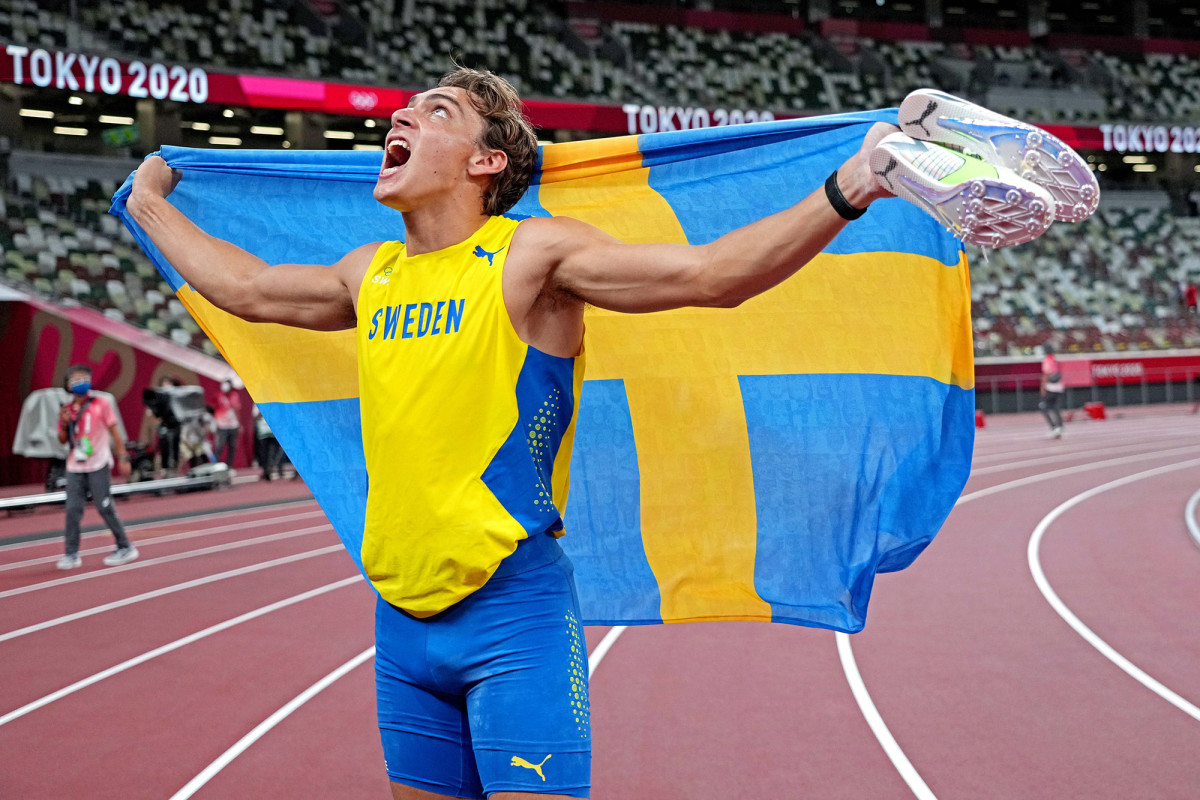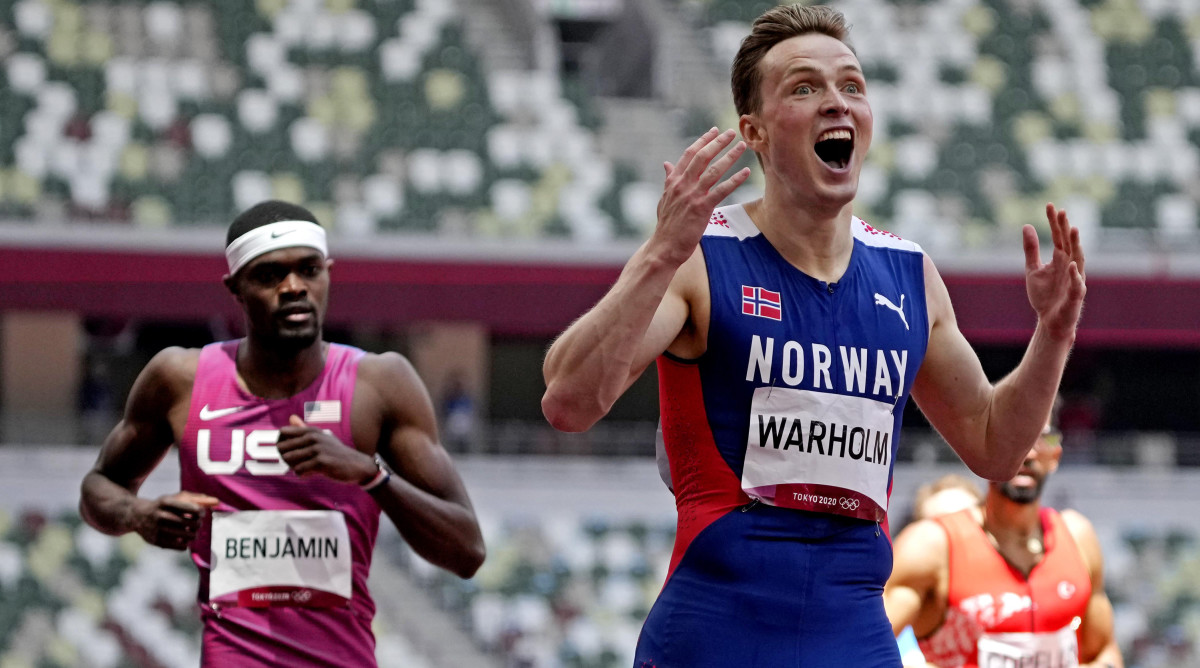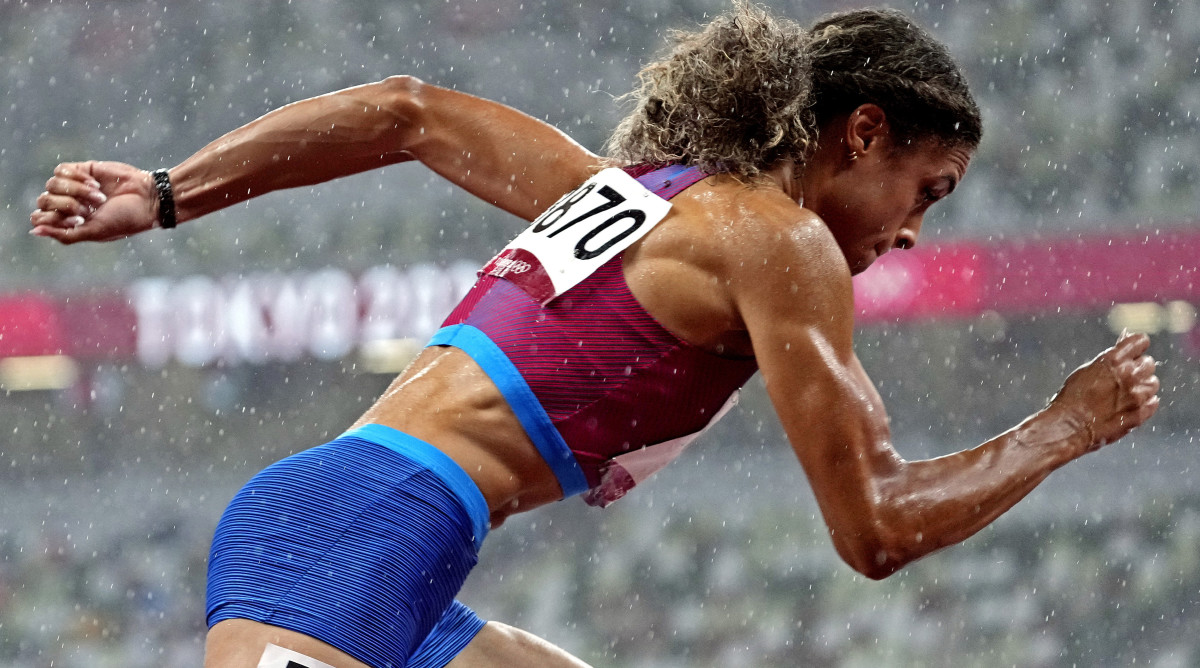Track and Field Rivalries Power Excitement, Results at Tokyo Olympics

Sign up for our free daily Olympics newsletter: Very Olympic Today. You'll catch up on the top stories, smaller events, things you may have missed while you were sleeping and links to the best writing from SI’s reporters on the ground in Tokyo.
TOKYO — When news broke late last week that American pole vaulter Sam Kendricks had tested positive for COVID-19 and would not compete in the Olympics, his chief rival found out at the site of their scheduled duel. They were supposed to compete, against each other, at National Stadium, Kendricks and the event’s world-recorder-holder Armand Duplantis. Instead, while Armand and his father/coach, Greg, toured the grounds, their phones began lighting up.
Eventually, one of them looked down. “Bizarre and shocking” is how Greg describes the scene. At that moment, all he said was, “Oh, my God.” Both consider Kendricks a friend. Both felt sorry for him. And yet, an important distinction remained in play. It’s one thing to sympathize with a rival ousted before the competition starts; it’s a far better thing to win.
“I don’t wish anything bad on anybody,” Greg says, “but …”
In many ways, two careers had built to this exact crescendo, to these particular Olympics, where a sport defined by duels featured even more than usual. They could have renamed the stadium High Noon and played the sound effects from John Wayne movies over loudspeakers.
Greg Duplantis understood. He took up pole vaulting in the 1970s, qualifying four times for the U.S. Olympic trials. He met his wife, Helena, on the LSU track team, before opening a law practice. Their four children did not grow up like most kids on the Bayou, because they grew up running, jumping and vaulting in a custom pole vault pit that Greg constructed in the backyard.
First, he found an old frame marked for the junkyard, paying pennies on the dollar for it (about $10,000). Then he built the runway. Since a neighbor also carved a putting/chipping green, they officially live in the best neighborhood in the universe—although it must be strange to mow the lawn on Saturday and see world-class vaulters clearing the Duplantis fence on poles and falling in human parabolas back to earth.
Armand Duplantis, known as Mondo, grew up in that environment. By age 3, he was already vaulting, either over low bars in the pit or using drumsticks to jump onto the living room couch. With both an early start and the perfect cocktail of skills—athletic, strong, fast and, most of all, fearless—it’s no wonder he became a prodigy. Often, Greg stumbled upstairs after filing a legal brief and saw Mondo in the same place, seated at the computer, watching pole vault and obsessing over various techniques.
Eventually, the boy from the bayou would decide after much deliberation to compete for Sweden in the Olympics, rather than the U.S. On Feb. 8, 2020, he set the world record, vaulting 6.17 meters (roughly 20 feet, 2-3/4 inches). A week later, he cleared 6.18 (20 feet, 3-1/4 inches), breaking his own mark. Not even 21 yet, he needed a rival, someone to propel him to further greatness. “It’s like anything,” Greg says. “When you get pushed, that adrenaline and excitement make you better.”
Enter Kendricks. Not only did he compete for the country that Duplantis lived in but chose not to vault for, but he also won world championship golds in 2017 and ’19. If Duplantis reached a LeBron James-adjacent level of fame in Sweden, he also made Kendricks famous there, if only as a foil. All of which set an incredible stage for Tokyo 2020, at least, until the positive test result came back. Without his rival in Tokyo, Duplantis cemented his status as the world's best in his sport by clearing 6.02 meters to take the gold medal on Tuesday—and he may have done so if Kendricks competed.

No matter. The Rivalry Games would continue at a furious pace. Here, they call them the “Olympics.” That’s not to say track and field existed all these years without similarly anticipated duels in a variety of events. In fact, track regularly churns out Yankees-Red Sox levels of one-upmanship; smaller, more enticing competitions within the larger one that stoke interest, history, friendship, hatred and debates. Think Carl Lewis-Ben Johnson before the steroid scandal, or Seb Coe–Steve Ovett, to name just two.
They’re not over, these rivalries contested on a grand international stage—not by a long shot. And definitely not here at these Games.
A pair of Jamaican sprinters set the stage on Saturday, wrestling over the history of their sport by seeing who could run the fastest down a single straightaway. For Shelly-Ann Fraser-Pryce, another 100-meter gold would mean a tie with Bolt atop the 100 all-time-gold leaderboard, with three overall. For Elaine Thompson-Herah, victory would secure a second-consecutive fastest-woman-on-the-planet title, matching Fraser-Pryce and only two other female speedsters in the history of the Games.
Off they went, pushing each other to go faster, with Thompson-Herah jumping out front, Fraser-Pryce closing the gap and inching toward the lead and Thompson-Herah hitting her nitro booster to break an Olympic record that had stood for 33 years. Had she not celebrated early, pointing at the clock as if to say, I did that, she might have threatened the world record, too. “I could have gone faster,” she said. But not without her rival.
That face-off, electric as it was, wasn’t even the one that typified rivalry week at the Olympics. No, that sprint happened Tuesday, in the men’s 400-meter hurdles, where the only jaws that didn’t drop like broken elevators belonged to humans without a pulse.
Before the gun sounded, Karsten Warholm of Norway and Rai Benjamin of the U.S. did not walk off 10 paces, turn and fire. They might as well have. They had already been conducting the equivalent all summer. In late June, at the U.S. trials, Benjamin sprinted and leapt, sprinted and leapt, leaning into the finish but .05 seconds short of setting a new world record while recording the second-fastest time in the history of his event. Only a week later, Warholm did break the mark in Oslo, running his lap in an absurd 46.70 seconds.
Thus two of the best combatants in the history of their event became defined less by their own feats and more by their rivalry, as often happens across sports. Benjamin, when asked about it in Tokyo, answered honestly, saying, “I’m really trying to avoid that question, because the Norwegian media has been butchering me about that. They say I talk about it too much.”

Off they went on Tuesday morning, in blazing heat described as “oppressive” in multiple newspaper recaps and in search of blazing times. The duo seemed to run and hurdle as if tethered together, neither ever far from the other’s pace, one in Lane 5 (Benjamin), the other in Lane 6 (Warholm). The rest of the field behind them, unable to match the blistering pace. The fortunate few who wiggled their way inside stopped whatever they were doing and mumbled their awe or screamed it.
Down the backstretch, they sprinted, shoulder to shoulder, with Warholm opening a sliver-sized lead. Benjamin was waiting for him, summoning what energy remained for a final push at the exact moment he had planned. He jumped over the final hurdle and crossed the finish line, breaking Warholm’s world record, finishing in 46.17 seconds. There remained only one problem: Warholm had deployed his own kick and toppled his own mark, too. He ran a 45.94.
To not just win, but to win like that, in an epic finish that featured the two fastest 400-meter hurdle sprints of all time, against a formidable—and familiar—foe, sent Warholm into an epic celebration. The blond Norwegian known as the Terminator screamed and tore apart his singlet like a professional wrestler headed toward the ring. Benjamin didn’t smile, not exactly, but he sat there, looking … baffled. He had every right to be. The highest qualifying time in the 400-meter preliminary heats on Monday clocked in at 45.64. The rivals added hurdles to that mix and Warholm almost matched the best prelim mark without them anyway.
An hour later, Warholm was still processing, saying he had dreamed about that finish “like a maniac.”
“By far the biggest moment of my life,” he said.
“It hurts,” Benjamin said.
Such is that rivalry life. It will continue Wednesday in the women’s version of the same event, and, like all races here, it will likely be aided by a track competitors unanimously describe as “fast.” This notion is backed up by the world and Olympic records that continue to fall like dominoes. That, apparently, is not an accident. The international manager for Mondo, the Olympic track supplier, told The New York Times this week that the surface had been designed to maximize speed. His designers, Andrea Vallauri told the paper, had experimented with various types of rubber, before deciding on something called “three-dimensional granules” that encouraged shock absorption and made the track more like a trampoline.
It worked. In the women’s 100-meter final, six competitors dashed to the finish line in under 11 seconds. The bronze winner, Shericka Jackson of Jamaica, registered the fastest-ever third-place finish at an Olympic Games.

Perhaps one top female 400-meter hurdles competitor will break another world record on Wednesday morning here. They’re rivals, too, of course, and both from America. There’s Dalilah Muhammad, the defending Olympic champion; and there’s Sydney McLaughlin, owner of that mark, which she took from its former holder—Muhammad, of course.
McLaughlin described that scenario as possible, because of their talent, because of the track and because of each other, more than anything. So as Tuesday turned to Wednesday, a natural question loomed: not whether the rivals would make a run at yet another lowest-ever time, but which one was more likely, more attuned, to break the existing mark?
They race at 11:30 a.m.. That’s not exactly high noon, but it’s close enough.
More Olympics Coverage:
• How Simone Biles Came Back to Win the Bronze of Her Life
• Former Gymnasts Left Paralyzed Are No Stranger to the Struggles Biles Faced
• Gabby Thomas Sets New Standard for Sprinters, On and Off the Track
• Bright Future Ahead for U.S. Swimming After Tokyo
